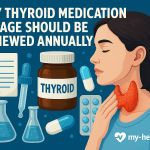Living with diabetes can feel overwhelming at first, but the good news is that everyday choices about food and movement have a powerful impact on your health. With the right combination of nutrition, physical activity, and medical care, effective diabetes management is absolutely possible. This guide walks you through evidence-based strategies you can start using today.
Understanding Diabetes
Diabetes mellitus is a chronic condition in which the body has trouble regulating blood sugar (glucose). Either the pancreas does not produce enough insulin, or the body’s cells do not respond properly to insulin (insulin resistance). Over time, poorly controlled blood sugar levels can damage blood vessels and nerves, increasing the risk of:
- Cardiovascular disease (heart attack, stroke)
- Chronic kidney disease
- Diabetic retinopathy and vision loss
- Peripheral neuropathy, foot ulcers, and infections
The goal of diabetes management is not only to control numbers on a lab report, but to protect your long-term health, quality of life, and independence.
Main Types of Diabetes
There are three major forms:
- Type 1 diabetes (T1DM) – an autoimmune condition in which the immune system destroys insulin-producing β-cells. Lifelong insulin therapy is required.
- Type 2 diabetes (T2DM) – the most common form. It is strongly associated with overweight, obesity, sedentary lifestyle, and genetic predisposition. In early stages it is often driven by insulin resistance. Many people with T2DM can dramatically improve control, and sometimes achieve remission, with sustained lifestyle changes.
- Gestational diabetes – occurs during pregnancy and usually resolves afterwards, but it increases the lifetime risk of Type 2 diabetes for both mother and child.
Understanding your specific type (usually T2DM in adults) helps you and your healthcare team choose the most effective treatment plan.
Why Lifestyle Matters So Much in Type 2 Diabetes
In Type 2 diabetes, the body is still able to produce insulin, especially early on. The main problem is that cells do not respond effectively – they are “resistant.” The most powerful ways to improve insulin sensitivity are:
- Healthy weight management
- Regular physical activity
- A balanced eating pattern that supports stable blood sugar control
These are not “optional extras” next to medication – they are core treatments that can reduce medication needs, improve energy, and lower the risk of complications.
The Role of Nutrition in Diabetes Management
Food is one of the strongest tools you have. A smart nutrition plan helps you:
- Keep blood glucose within your target range
- Avoid extreme highs and lows
- Support a healthy weight
- Protect your heart, liver, and kidneys
Rather than following a strict “diabetes diet,” think in terms of sustainable healthy eating patterns.
Carbohydrate Counting: The Foundation of Blood Sugar Control
Carbohydrates (carbs) have the most direct impact on blood sugar because they are broken down into glucose. Learning basic carbohydrate counting can help you:
- Predict how meals affect your blood glucose
- Match insulin doses (if you use insulin) to your carb intake
- Avoid hidden sources of sugar in drinks and snacks
A simple approach:
- Aim for roughly similar amounts of carbohydrate at each main meal.
- Choose complex carbohydrates with fiber (whole grains, legumes, vegetables) over refined carbs (white bread, sweets, sugary drinks).
- Limit sugar-sweetened beverages and highly processed snacks.
If you need a structured plan, ask your dietitian or diabetes educator to design a personalized meal planning and carbohydrate counting strategy.
Choose Whole Foods and Smart Plate Balance
Prioritize whole foods that support both blood sugar control and heart health:
- Non-starchy vegetables: broccoli, spinach, peppers, tomatoes, green beans
- Lean proteins: skinless poultry, fish, eggs, tofu, beans, lentils
- Healthy fats: olive oil, nuts, seeds, avocado, fatty fish rich in omega-3
A simple visual method is the “diabetes plate”:
- ½ plate: non-starchy vegetables
- ¼ plate: lean protein
- ¼ plate: whole grains or starchy vegetables
This helps with both portion control and nutrient quality without feeling like you are “on a diet.”
For more ideas on building a nourishing plate and supporting digestion, you can also read this article on older adults’ gut health: These Foods Are the Enemy of Healthy Digestion in the Elderly.
Meal Timing and Avoiding Big Swings
Irregular meals and long gaps without food can trigger:
- Overeating at the next meal
- Large post-prandial glucose spikes
- Hypoglycemia if you use insulin or sulfonylureas
Try to:
- Eat regularly spaced meals (for many people, 3 main meals plus 1–2 small snacks work well)
- Combine carbs with protein and healthy fat to slow absorption
- Avoid late-night heavy meals that disturb sleep and glycemic control
For practical strategies to improve your sleep, see: Effective Sleep Hygiene Tips for Better Rest.
Exercise: A Key Component of Diabetes Care
Moving your body regularly is one of the most powerful ways to improve insulin sensitivity and blood sugar control. Exercise helps:
- Muscles take up more glucose, even with less insulin
- Lower HbA1c over time
- Improve blood pressure and cholesterol
- Support mental health and better sleep
The goal is not athletic performance; it is consistent movement.
Types of Exercise That Help
Aim for a combination of:
- Aerobic exercise – brisk walking, cycling, swimming, dancing, or low-impact classes
- Resistance training – bodyweight exercises, resistance bands, or light weights 2–3 times per week
- Everyday activity – taking the stairs, gardening, short walking breaks during the day
A realistic target for most adults with T2DM is:
- At least 150 minutes per week of moderate-intensity physical activity (for example, 30 minutes on 5 days)
- Plus 2 days of strength training focusing on major muscle groups
Always discuss new exercise plans with your healthcare provider if you have heart disease, neuropathy, eye disease, or other complications.
Safe Exercise and Glucose Monitoring
Because exercise affects blood glucose for hours afterwards, safety is important:
- Check your blood sugar before activity.
- If it is below 70 mg/dL, treat hypoglycemia and delay exercise.
- If it is above 240 mg/dL, especially with ketones, avoid vigorous exercise and follow your sick-day or correction plan.
- Keep a fast-acting carbohydrate (glucose tablets, juice) with you in case of low blood sugar.
Keep a simple log of exercise time, intensity, and glucose values. Over time, you and your team can adjust medication, food, and exercise based on real patterns.
Hydration and Temperature Awareness
Dehydration can worsen high blood sugars and increase the risk of complications. To stay safe:
- Drink water regularly before, during, and after exercise
- Avoid sugary sports drinks unless specifically advised for hypoglycemia prevention
- Be cautious with very hot or cold environments, especially if you have neuropathy or cardiovascular disease
Expert Clinical Insight
Clinicians often meet people with Type 2 diabetes for the first time in the emergency department or urgent care with complications such as severe hyperglycemia, infections, or chest pain. When we review their history, a few patterns appear again and again:
- They knew they had diabetes, but did not realize that daily decisions about food and movement mattered as much as medication.
- They were given general advice like “lose weight” or “eat less sugar,” but no practical meal planning tools or follow-up support.
- Many felt guilty or ashamed when numbers were not “perfect,” which led to avoidance of clinic visits instead of earlier adjustments.
What changes the trajectory is rarely one “magic” diet or workout. It is usually:
- A clear, realistic plan for blood sugar control
- Education about how carbohydrate counting and physical activity work together
- Regular, compassionate reviews with the healthcare team where questions and obstacles are openly discussed
If your numbers are not where you want them to be, it does not mean you have failed. It means your treatment plan needs to be adjusted – and that is exactly what your team is there to do.
Practical Clinic Tips for Everyday Life
To turn guidelines into daily habits, these small steps can help:
- Prepare for appointments
Bring your glucose log, medication list, and questions. Note episodes of hypoglycemia, dizziness, chest discomfort, or changes in vision. - Build an “everyday plate” you can repeat
Choose 2–3 simple, balanced meals you like and can prepare quickly. Rotate them during busy weeks to avoid fast food and skipped meals. - Have a movement plan, not just a goal
Instead of “I’ll exercise more,” write: “I will walk 15 minutes after lunch on Monday, Wednesday, and Friday.” Schedule it like a real appointment. - Protect your feet
Check them daily for cuts, blisters, or color changes. Wear well-fitting shoes; seek medical care early for any wounds. - Pay attention to sleep and stress
Poor sleep and chronic stress worsen insulin resistance and cravings. Small improvements in sleep and stress management can significantly improve blood sugar control.
For more on lifestyle and long-term health, see: Preventing Chronic Diseases Through Lifestyle Changes.
Myth vs Fact
Myth: “If you have diabetes, you must avoid all carbohydrates.”
Fact: You do not need to eliminate carbs. The key is quality, quantity, and timing. Whole grains, fruits, legumes, and vegetables can be part of a healthy diabetes nutrition plan when portions and carbohydrate counting are considered.
Myth: “Exercise only matters if you lose weight.”
Fact: Regular exercise improves insulin sensitivity, blood pressure, mood, and sleep, even if your weight does not change. The benefits start with the very first walk.
Patient Story: Sarah’s Journey
Sarah, a 45-year-old teacher, was diagnosed with Type 2 diabetes after routine blood tests showed elevated fasting glucose and HbA1c. She felt overwhelmed and feared she would “never be able to eat normally again.”
With support from her care team, she:
- Learned basic carbohydrate counting and started planning her lunches instead of buying fast food.
- Switched sugary drinks to water and unsweetened tea.
- Began walking for 10 minutes after dinner, slowly increasing to 30 minutes most days.
Three months later, Sarah’s blood sugar control improved, her HbA1c decreased, and she reported better energy and sleep. Most importantly, she felt more confident and less anxious about her condition. Her story shows that small, consistent changes make a real difference.
Frequently Asked Questions (FAQ)
1. Can I still eat sweets if I have diabetes?
Yes, but in moderation. Occasional sweets can fit into your plan if you:
- Count them as part of your carbohydrate allowance
- Pair them with a balanced meal instead of eating them alone
- Choose smaller portions and more nutritious options (for example, a small piece of dark chocolate or fruit with yogurt)
2. How often should I check my blood sugar?
It depends on your treatment plan:
- People on insulin often need multiple checks per day.
- Others may focus on fasting glucose, occasional post-meal checks, and HbA1c.
Your healthcare provider will advise you based on your medications, risk of hypoglycemia, and overall goals.
3. Do I have to follow a very strict diet forever?
You do not need a rigid or “perfect” diet. A sustainable eating pattern based on whole foods, balanced macronutrients, and reasonable portion sizes is more effective long term than extreme restrictions.
4. What should I do if my blood sugar drops during exercise?
If your blood sugar falls below 70 mg/dL:
- Stop the activity.
- Take 15–20 g of fast-acting carbohydrate (for example, 3–4 glucose tablets or about 120 ml of juice).
- Re-check after 15 minutes and repeat if necessary.
- Discuss frequent lows with your healthcare provider – your medication or meal timing may need adjustment.
5. Can lifestyle changes really prevent diabetes?
Yes. For people at high risk (for example, with prediabetes), research shows that weight loss, increased physical activity, and healthier eating patterns can significantly reduce the chance of developing Type 2 diabetes.
Conclusion
Managing diabetes is not about perfection; it is about understanding your body and making informed, consistent choices. By focusing on balanced nutrition, smart carbohydrate counting, regular physical activity, and close partnership with your healthcare team, you can:
- Improve blood sugar control
- Reduce the risk of complications
- Support your energy, mood, and long-term health
You are not alone in this journey. Every small step – an extra walk, a more balanced plate, one better night of sleep – moves you closer to the healthier life you deserve.
Key Takeaways
- Nutrition is central to effective diabetes management.
- Carbohydrate counting and portion control help stabilize blood sugar levels.
- Regular exercise improves insulin sensitivity and cardiovascular health.
- Whole foods, balanced plates, and regular meal timing support long-term control.
- Building a trusted relationship with your care team is as important as any medication.








Post a comment